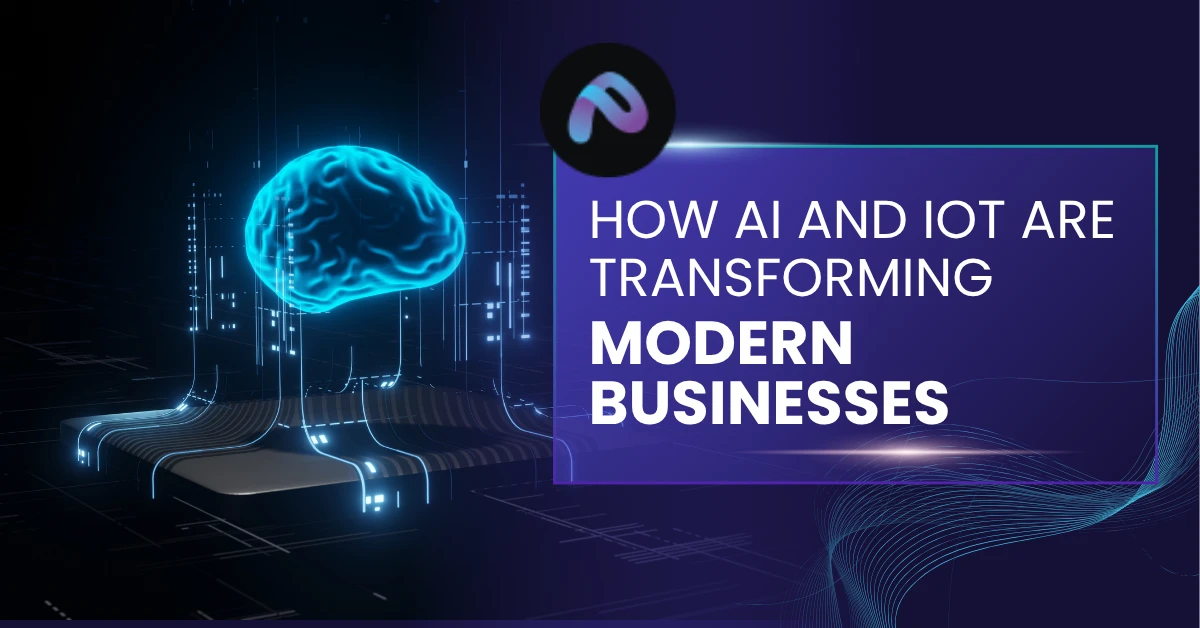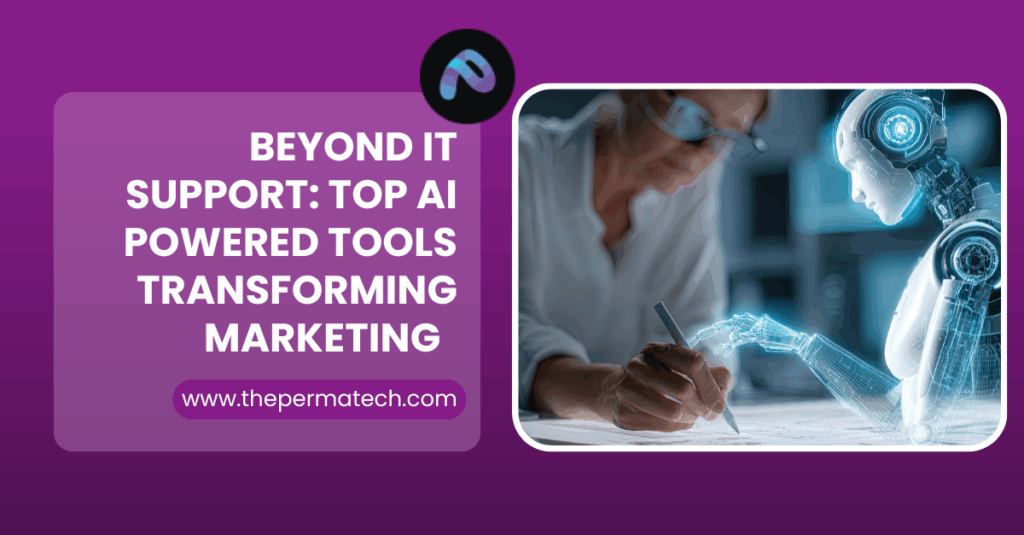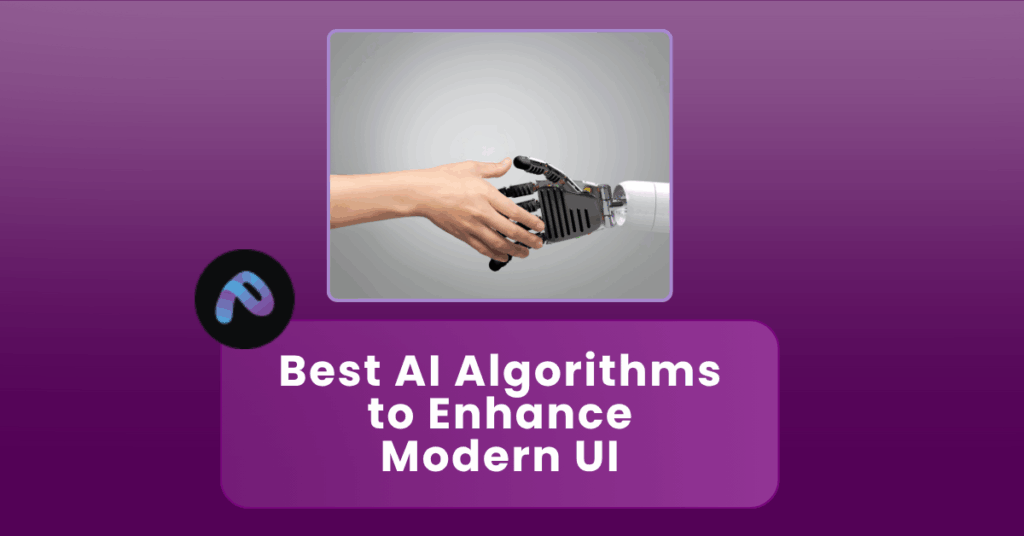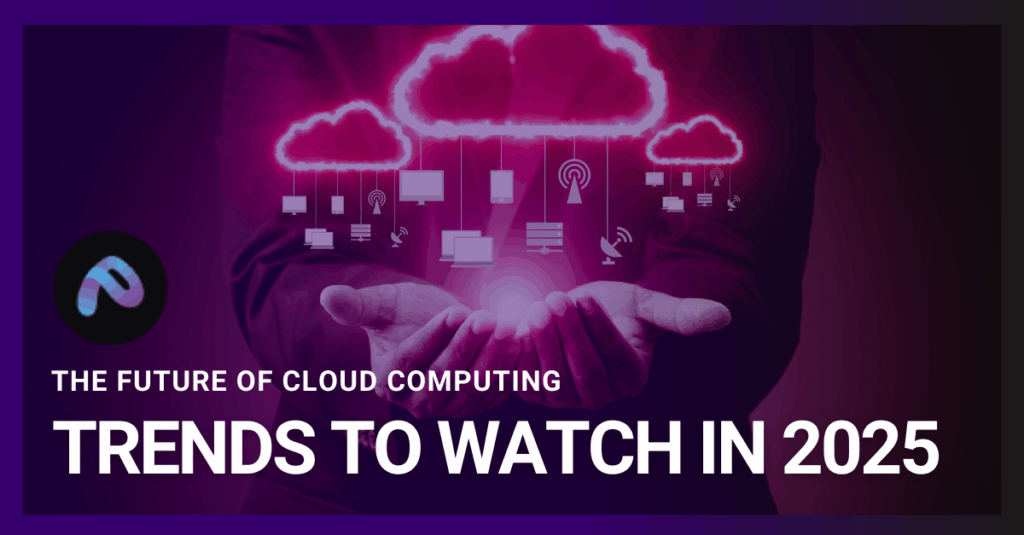In the future, every company will be an Artificial Intelligence company.
— Mark Cuban
Imagine walking into your office and the lights adjust based on your mood, the AC sets itself to your comfort level and your system loads the exact dashboard you need before you even sit down. You didn’t command anything ,it just happened. This isn’t science fiction. This is the convergence of Artificial Intelligence and the Internet of Things reshaping the way businesses operate.
In recent years, businesses have moved from digitization to intelligent automation. AI and IoT once buzzwords are now forming the nervous system of modern enterprises. Together, they’re not only gathering data but making intelligent decisions, unlocking productivity, enhancing customer experience, and creating more responsive organizations.
What Do AI & Internet of Things Mean?
Artificial Intelligence (AI) refers to the simulation of human intelligence by machines. These systems can learn from data, make decisions, recognize patterns and even predict future trends. AI powers applications like chatbots, recommendation systems, predictive analytics and autonomous vehicles.
Internet of Things refers to the network of physical devices embedded with sensors, software and connectivity which allows them to exchange data. Examples include smart thermostats, industrial machines, wearable health trackers and connected vehicles.
While IoT captures real time data from the physical world, Artificial Intelligence interprets this data and makes it actionable. Combined, they’re transforming passive systems into autonomous, learning entities.
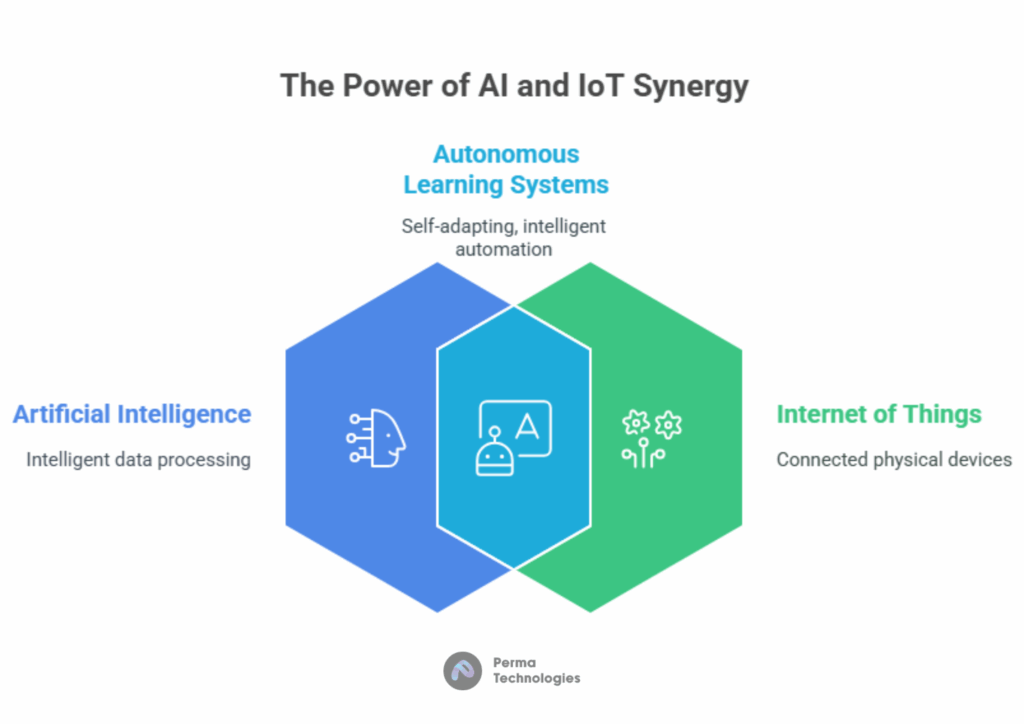
What Is the Role and Evolution of AI in Internet of Things?
As Internet of Things matured, businesses realized that capturing massive data wasn’t enough they needed intelligent systems to analyze and act on it in real time. That’s where Artificial Intelligence stepped in. Here’s how this evolution has taken shape:
Use Case 1: Predictive Maintenance in Manufacturing
IoT sensors embedded in machinery collect performance and environmental data. Artificial Intelligence algorithms analyze this data to predict equipment failure before it occurs, minimizing downtime and saving costs.
Use Case 2: Smart Supply Chain Management
Internet of Things tracks inventory levels, vehicle locations and environmental conditions. AI uses this data to optimize routes, predict stock outs, and even automate reordering processes.
Use Case 3: Personalized Retail Experiences
Smart shelves, beacons, and customer footfall analytics powered by Internet of Things devices help retailers understand shopping behavior. Artificial Intelligence customizes promotions, layouts and product placements to increase conversions and customer satisfaction.
These examples demonstrate that AI gives “brains” to IoT’s “senses”, making the system intelligent and proactive.
How Can AI Be Used in IoT Devices?
AI can be integrated into IoT in three core ways:
- Edge AI: Artificial Intelligence algorithms run directly on the Internet of Things device (like cameras or wearables) without sending data to the cloud. Edge AI reduces latency and enhances privacy.
- Cloud AI: Data from IoT devices is sent to centralized servers where complex models process it. Cloud AI allows for deeper insights, historical analysis, and model training.
- Hybrid Models: Real time decisions happen at the edge, while long term trends and updates are processed in the cloud.
These methods empower IoT devices to:
- Detect anomalies (e.g., unusual temperature spikes)
- Enable voice/image recognition (e.g., in smart home devices)
- Automate routine decisions (e.g., turning off lights in unoccupied rooms)
- Self optimize over time through machine learning.
Applications of AI in IoT Across Industries
The AI IoT synergy is transforming industries at scale:
- Healthcare: Smart wearables monitor vitals in real time and alert doctors about irregularities. AI can diagnose early symptoms based on this data.
- Agriculture: Soil moisture sensors and weather monitors feed data into Artificial Intelligence systems that optimize irrigation, fertilization and harvest times.
- Energy: Smart grids use AI to predict demand and supply, reduce waste and automate distribution.
- Automotive: Connected vehicles gather driving data, which AI uses to power advanced driver assistance systems (ADAS), route optimization and even self driving functions.
- Retail: AI driven analytics from IoT sensors help optimize store layouts, inventory restocking, and customer personalization.
What Are the Real World Applications of AI in IoT?
Let’s explore a few examples currently in practice:
- Nest Thermostat (Google): Uses sensors and AI to learn users’ preferences and adjusts heating/cooling accordingly reducing energy bills.
- John Deere: Their AI enabled IoT farm equipment can detect crop health issues, determine soil conditions, and adjust seeding automatically.
- Amazon Go: Combines AI, computer vision, and Internet of Things to create a checkout free shopping experience, where customers pick items and walk out while the system auto bills them.
- Tesla Vehicles: Every Tesla car is an IoT device. Data from millions of miles is analyzed using AI to improve self driving features and vehicle performance.
These examples prove that AIoT (AI + IoT) is not a trend but a business reality.
Benefits of AI in IoT
The integration of AI with IoT offers numerous advantages:
- Increased Efficiency: AI automates decisions based on IoT data, reducing manual intervention.
- Improved Accuracy: Reduces human error and enhances precision in manufacturing, logistics, and healthcare.
- Predictive Insights: Enables proactive actions through anomaly detection and trend forecasting.
- Real Time Decision Making: Immediate responses to events (e.g., halting a machine showing fault signs).
- Cost Savings: Optimized operations mean reduced downtime, energy use, and maintenance costs.
- Personalization: AI learns from user behavior to offer tailored experiences in smart homes, retail, and fitness.
Challenges of AI Adoption in Business
Despite the immense benefits, adopting AI in IoT brings challenges:
- Data Privacy & Security: Connected devices increase the surface for cyberattacks. Artificial Intelligence adds a layer of complexity in securing sensitive data.
- Integration Complexity: Aligning AI systems with existing IoT infrastructure and workflows can be technically demanding.
- High Initial Costs: Deploying smart devices, training AI models, and hiring skilled professionals require significant investment.
- Lack of Talent: There’s a global shortage of Artificial Intelligence IoT professionals who can build, deploy, and maintain these systems.
- Data Quality: AI is only as good as the data it learns from. Inconsistent, noisy, or biased data can lead to inaccurate decisions.Organizations must address these hurdles through strategic planning, strong cybersecurity practices and ongoing investment in talent and technology.
Conclusion
The convergence of AI and IoT is no longer just a futuristic vision, it’s already reshaping how businesses operate, compete and serve customers. As smart devices proliferate and Artificial Intelligence becomes more accessible, businesses that embrace this powerful duo will unlock new efficiencies, deeper insights, and sustainable competitive advantages.Whether you’re in manufacturing, healthcare, agriculture or retail the future of business lies at the intersection of intelligence and connectivity. AI in IoT isn’t just modernizing business,it’s redefining it.

